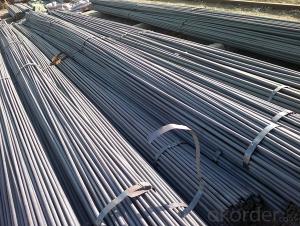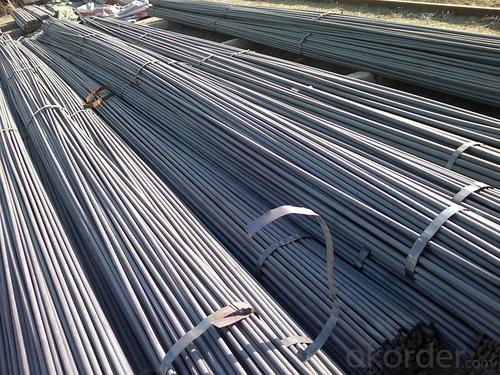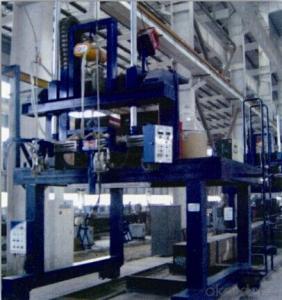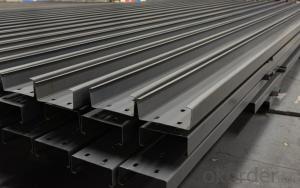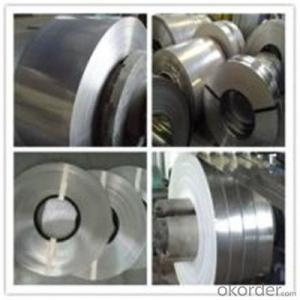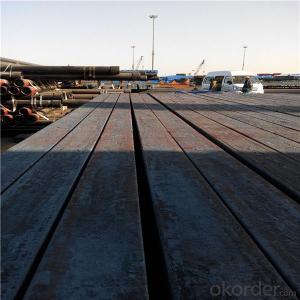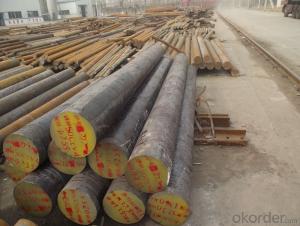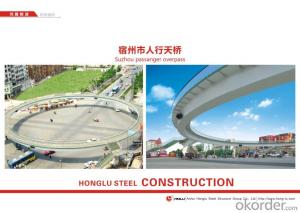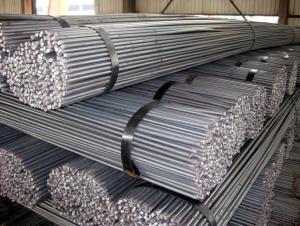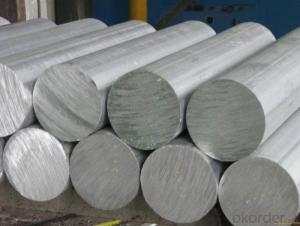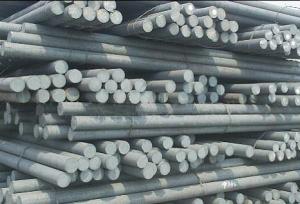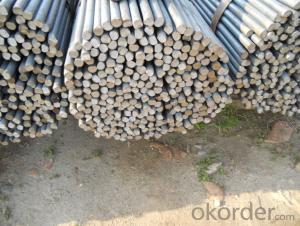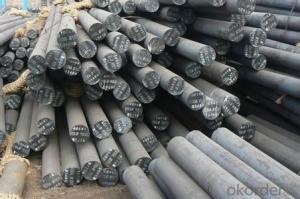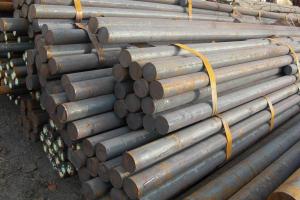Round Steel with Multiple Materials Made in China for Sale
- Loading Port:
- China main port
- Payment Terms:
- TT OR LC
- Min Order Qty:
- 100 m.t.
- Supply Capability:
- 2000 m.t./month
OKorder Service Pledge
OKorder Financial Service
You Might Also Like
Specification
Product Description:
OKorder is offering Round Steel with Multiple Materials Made in China for Sale at great prices with worldwide shipping. Our supplier is a world-class manufacturer of steel, with our products utilized the world over. OKorder annually supplies products to European, North American and Asian markets. We provide quotations within 24 hours of receiving an inquiry and guarantee competitive prices.
Product Applications:
Round Steel with Multiple Materials Made in China for Sale are ideal for structural applications and are widely used in the construction of buildings and bridges, and the manufacturing, petrochemical, and transportation industries.
Product Advantages:
OKorder's Round Steel with Multiple Materials Made in China for Sale are durable, strong, and resist corrosion.
Main Product Features:
· Premium quality
· Prompt delivery & seaworthy packing (30 days after receiving deposit)
· Corrosion resistance
· Can be recycled and reused
· Mill test certification
· Professional Service
· Competitive pricing
Packaging Details:
Products are packed in bundle and then shipped by container or bulk vessel, deformed bar is usually naked strapping delivery, when storing, please pay attention to moisture proof. The performance of rust will produce adverse effect.
Each bundle weight: 2-3MT, or as required
Payment term: TT or L/C
Delivery Detail: within 45 days after received advanced payment or LC.
Label: to be specified by customer, generally, each bundle has 1-2 labels
Trade terms: FOB, CFR, CIF
FAQ:
Q1: How do we guarantee the quality of our products?
A1: We have established an advanced quality management system which conducts strict quality tests at every step, from raw materials to the final product. At the same time, we provide extensive follow-up service assurances as required.
Q2: Why buy Materials & Equipment from OKorder.com?
A2: All products offered byOKorder.com are carefully selected from China's most reliable manufacturing enterprises. Through its ISO certifications, OKorder.com adheres to the highest standards and a commitment to supply chain safety and customer satisfaction.
Q3: How soon can we receive the product after purchase?
A3: Within three days of placing an order, we will begin production. The specific shipping date is dependent upon international and government factors, but is typically 7 to 10 workday.
Images:
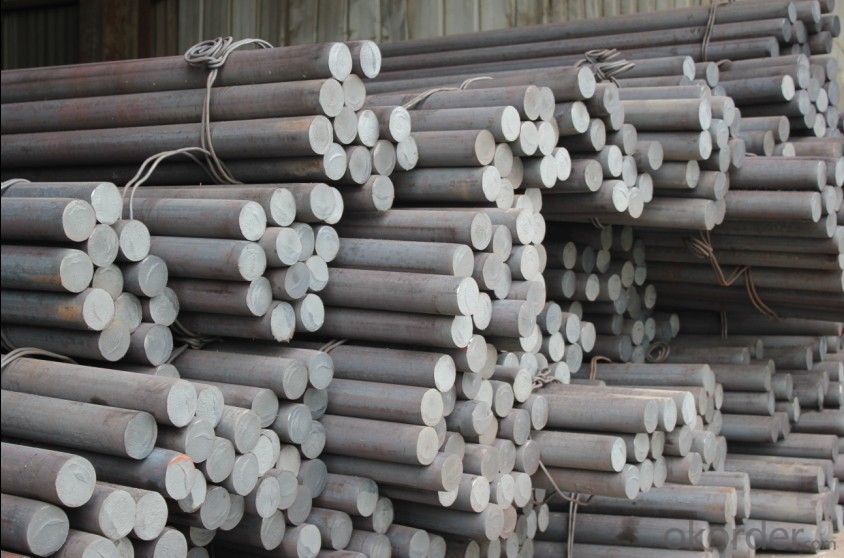
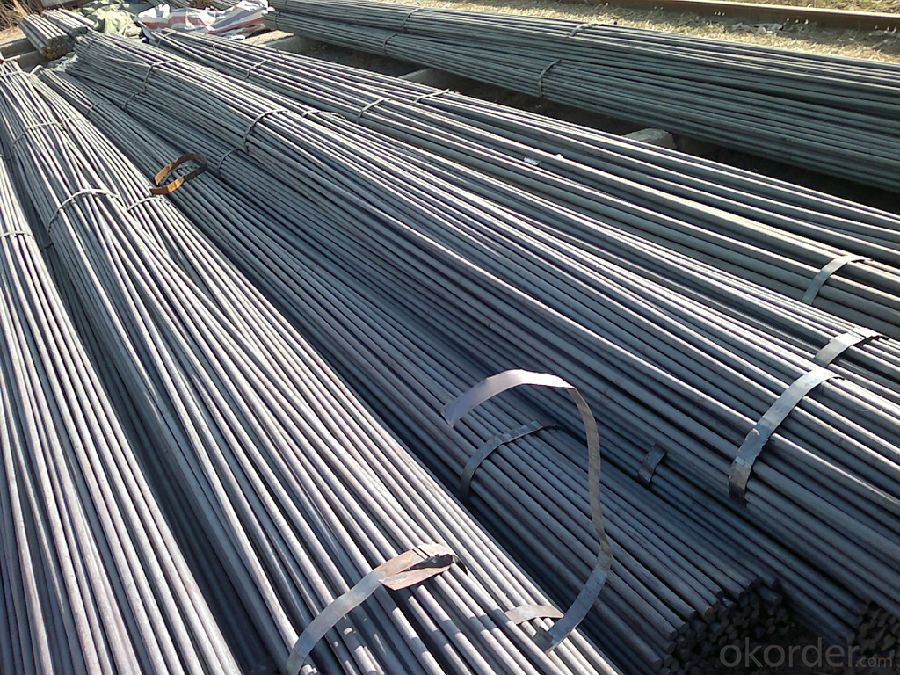
- Q: How do steel round bars compare to titanium round bars?
- Steel round bars and titanium round bars possess distinct properties and characteristics that render them suitable for various applications. Below is a comparative analysis of the two: 1. Strength: In terms of strength-to-weight ratio, titanium round bars surpass steel round bars. This implies that titanium can endure larger loads and stresses while being lighter in weight compared to steel. Nevertheless, steel round bars generally exhibit greater strength and rigidity than titanium, making them ideal for heavy-duty applications necessitating high strength. 2. Resistance to Corrosion: Titanium round bars display an exceptional resistance to corrosion, even in harsh environments like saltwater. Conversely, steel is prone to corrosion and necessitates additional protective measures (e.g., coatings or galvanization) to forestall rusting. Consequently, titanium round bars are preferred in applications where corrosion resistance is vital. 3. Density: Titanium round bars possess a lower density in comparison to steel round bars. This diminished density renders titanium well-suited for applications where weight reduction is critical, such as the aerospace and automotive industries. Steel round bars, with their higher density, are typically employed in applications where weight is of less concern. 4. Resistance to Temperature: Titanium round bars exhibit excellent resistance to heat, retaining their mechanical properties even at high temperatures. Conversely, steel round bars may lose their strength and become brittle when subjected to elevated temperatures. Hence, titanium round bars are suitable for applications requiring resistance to elevated temperatures. 5. Cost: Generally, steel round bars are more cost-effective than titanium round bars. Titanium is an expensive metal due to its scarcity and intricate extraction process. The cost disparity between the two materials can be significant, making steel round bars more favorable for budget-conscious projects. In conclusion, the selection between steel round bars and titanium round bars hinges on the specific requirements of the application. Steel is preferable for its superior strength and affordability, whereas titanium offers advantages such as high strength-to-weight ratio, corrosion resistance, temperature resistance, and lower density.
- Q: What are the advantages of using tool steel round bars?
- Tool steel round bars offer numerous benefits. Firstly, they boast outstanding hardness and wear resistance, making them perfect for high-stress applications like manufacturing cutting tools, dies, and molds. The hardness of tool steel also enables precise machining, resulting in accurate and intricate shapes. Secondly, tool steel round bars possess exceptional toughness and impact resistance, enabling them to withstand heavy-duty applications without breaking or cracking. This makes them suitable for demanding industries such as aerospace, automotive, and construction. Moreover, tool steel round bars are renowned for their high temperature resistance, maintaining their hardness and strength even in extreme heat. This is particularly advantageous in applications exposed to high temperatures, like forging or heat treating operations. Another advantage is the dimensional stability of tool steel round bars. They have a low coefficient of thermal expansion, meaning they undergo minimal dimensional changes when subjected to temperature variations. This ensures reliability and predictability in various operating conditions. Furthermore, tool steel round bars can be easily machined and heat treated to achieve specific properties. This versatility allows manufacturers to tailor the material to their specific needs, enhancing the overall performance of the end product. Additionally, tool steel round bars are readily available and cost-effective. They are widely produced and stocked by suppliers, ensuring easy accessibility for various applications. Furthermore, their longevity and resistance to wear and tear contribute to their cost-effectiveness. In conclusion, the advantages of using tool steel round bars include exceptional hardness, toughness, high temperature resistance, dimensional stability, versatility, availability, and cost-effectiveness. These properties make them the preferred choice in industries where durability, precision, and reliability are paramount.
- Q: Can steel round bars be used in the hydraulic industry?
- Yes, steel round bars can be used in the hydraulic industry. Steel round bars are often used in the manufacturing of hydraulic cylinders, pump shafts, and various hydraulic components due to their high strength, durability, and resistance to corrosion.
- Q: What is the difference between a seamless and a precision ground steel round bar?
- A seamless steel round bar is manufactured without any seams or welds, resulting in a smooth and uniform surface throughout the entire length. On the other hand, a precision ground steel round bar is manufactured with precise dimensions and surface finish, typically achieved through grinding or machining processes. This ensures tighter tolerances and a more accurate diameter, making it suitable for applications requiring high precision and tight dimensional control.
- Q: What are the different marking methods for steel round bars?
- Steel round bars commonly use several marking methods to identify and provide information about the bars. These methods include stamping, laser marking, inkjet printing, etching, and color coding. Stamping involves using a machine to imprint alphanumeric characters, symbols, or logos onto the steel bar's surface. This method provides a durable and corrosion-resistant marking. Laser marking, on the other hand, uses a laser beam to engrave precise and high-quality information onto the bar. It allows for intricate designs, barcodes, and serial numbers and ensures permanent identification. Inkjet printing is a non-contact method that prints information using inkjet technology. It is commonly used for barcodes, QR codes, and other data matrix codes. This method is fast and efficient, with ink that adheres effectively to the steel surface. Etching is a chemical method that removes layers of the steel's surface using acid or other chemicals. It creates a visible mark and is often used for logos and identification numbers. Etching provides a permanent and easily readable marking. Color coding is a simple method that uses paint or colored coatings to mark different steel grades. Each color represents a specific attribute or characteristic. Color coding allows for quick and visual identification of the bars. These marking methods are essential in industries like construction, manufacturing, and engineering as they ensure proper identification, traceability, and quality control of steel round bars. The choice of method depends on factors such as permanence, visibility, and the specific information to be marked on the bars.
- Q: What are the different types of tests performed on steel round bars for quality control?
- There are several types of tests performed on steel round bars for quality control. These include visual inspection, dimensional checks, surface roughness evaluation, hardness testing, tensile testing, impact testing, and chemical composition analysis. These tests help ensure that the steel round bars meet the required quality standards and are fit for their intended applications.
- Q: What are the different types of steel round bars used in the agricultural sector?
- In the agricultural sector, there are several types of steel round bars that are commonly used due to their strength, durability, and versatility. These bars play a crucial role in various agricultural applications. 1. Mild Steel Round Bars: Mild steel is one of the most widely used types of steel in the agricultural sector. It offers excellent strength and is relatively low in cost. Mild steel round bars are commonly used in the construction of agricultural equipment, such as plows, cultivators, and harrows. 2. Carbon Steel Round Bars: Carbon steel round bars are known for their high strength and toughness. They can withstand heavy loads and are ideal for applications that require superior durability. Carbon steel round bars are commonly used in the manufacturing of tractor parts, tillage tools, and other heavy-duty agricultural machinery. 3. Alloy Steel Round Bars: Alloy steel round bars are made by adding various alloying elements to steel, such as chromium, nickel, or molybdenum. These elements enhance the strength, hardness, and corrosion resistance of the steel. In the agricultural sector, alloy steel round bars are often used in the manufacturing of high-performance components, such as gears, axles, and shafts. 4. Stainless Steel Round Bars: Stainless steel round bars are highly resistant to corrosion and have excellent mechanical properties. They are commonly used in agricultural applications that require resistance to moisture, chemicals, and harsh environments. Stainless steel round bars are often utilized in the manufacturing of dairy equipment, storage tanks, and irrigation systems. 5. Tool Steel Round Bars: Tool steel round bars are specifically designed to withstand high temperatures, abrasion, and impact. They are used in agricultural applications that involve cutting, shaping, or drilling. Tool steel round bars are commonly used in the production of blades, cutting tools, and machinery parts for crop harvesting and processing. It is important to consider the specific requirements and conditions of each agricultural application when selecting the appropriate type of steel round bar. By choosing the right steel round bar, farmers and agricultural professionals can ensure the reliability and longevity of their equipment and machinery.
- Q: How do you determine the appropriate steel grade for a specific application?
- Determining the appropriate steel grade for a specific application requires a comprehensive understanding of the application's requirements and the properties of different steel grades. Here are some key steps to consider: 1. Identify the application requirements: Start by clearly defining the specific application's requirements such as load-bearing capacity, corrosion resistance, temperature resistance, and durability. Consider factors such as the environment the steel will be exposed to, the expected stress levels, and any specialized characteristics needed. 2. Research steel grades: Once the application requirements are understood, research various steel grades available in the market. Identify steel grades that are known for possessing the desired properties required for the specific application. Consult industry standards, expert opinions, and available resources to gain insights into different steel grades and their performance in similar applications. 3. Evaluate material properties: Analyze the physical, mechanical, and chemical properties of the steel grades under consideration. Key properties to assess include strength, ductility, toughness, hardness, corrosion resistance, weldability, and formability. Compare these properties with the application requirements to determine which steel grades align best with the specific needs. 4. Consider cost and availability: Evaluate the cost and availability of the steel grades that meet the application requirements. Factors such as the initial cost, maintenance costs, and availability of the steel grade in the required form and quantity should be taken into account. This step ensures that the chosen steel grade is not only suitable but also feasible from an economic perspective. 5. Seek expert advice: Consulting with experts, such as metallurgists or engineers, can provide valuable insights into selecting the appropriate steel grade. Their expertise and experience can help weigh the pros and cons of different steel grades, identify potential challenges, and suggest alternatives or modifications if necessary. 6. Conduct testing and trials: If feasible, conduct testing or trials using samples of the selected steel grade to assess its performance under real-world conditions. This step can help validate the suitability of the chosen steel grade and identify any unforeseen issues or areas for improvement. By carefully considering the application requirements, researching steel grades, evaluating material properties, considering cost and availability, seeking expert advice, and conducting testing and trials, one can effectively determine the appropriate steel grade for a specific application.
- Q: Are steel round bars suitable for use in the oil and gas industry?
- Yes, steel round bars are suitable for use in the oil and gas industry. They are commonly used in various applications such as drilling, production, and transportation of oil and gas. Steel round bars possess high strength, durability, and resistance to corrosion, making them ideal for withstanding the harsh conditions and demands of the industry.
- Q: How do you cut steel round bars?
- Steel round bars can be cut using various methods such as sawing, shearing, or using a cutting torch. Sawing involves using a bandsaw or a hacksaw to cut through the bar, while shearing uses a hydraulic or mechanical shear to trim the bar. Alternatively, a cutting torch can be used to melt through the steel, creating a clean cut. The choice of method depends on the thickness and size of the round bar, as well as the desired precision and efficiency of the cut.
Send your message to us
Round Steel with Multiple Materials Made in China for Sale
- Loading Port:
- China main port
- Payment Terms:
- TT OR LC
- Min Order Qty:
- 100 m.t.
- Supply Capability:
- 2000 m.t./month
OKorder Service Pledge
OKorder Financial Service
Similar products
Hot products
Hot Searches
Related keywords
